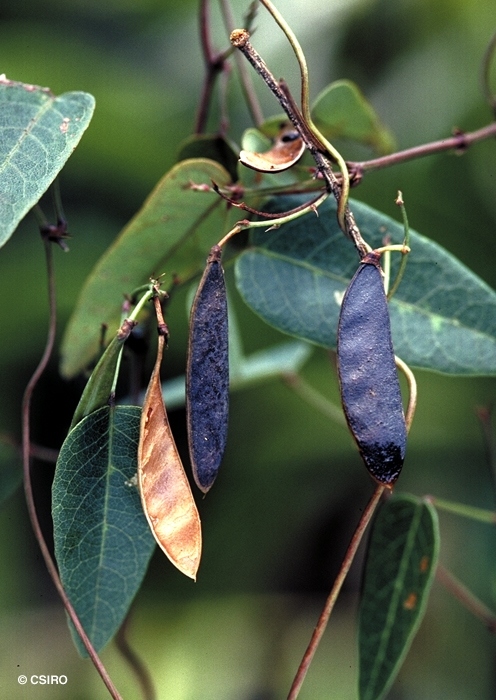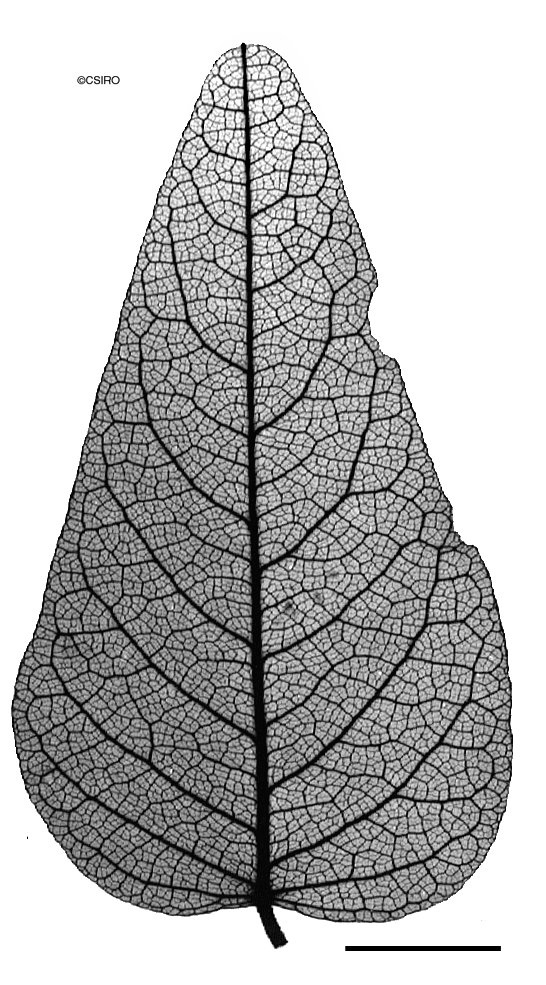Australian Tropical Rainforest Plants - Online edition
Hardenbergia violacea (Schneev.) Stearn



Stearn, W.T. (1940) The Journal of Botany 78: 70.
Climbing Morning Glory; Purple Twining Pea; Sarsaparilla, Native; Native Sarsaparilla; Sarsaparilla, False; False Sarsaparilla; Native Woodrose; Sarsaparilla; Pea, Purple Coral; Purple Coral Pea; Pea, Purple Twining
A slender vine not exceeding a stem diameter of 2 cm.
Calyx tube about 3 mm long, the lobes about 1 mm long except for one pair which are fused together almost completely. Petals: standard about 9 x 10-11 mm, mainly purple except for a green 'eye' near the base; wings about 8 x 3 mm; keel about 6 x 2 mm. Stamens10, one stamen free from the rest which are fused together by their filaments to form a tube 3-4 mm long while the upper sections of the filaments remain free. Ovary about 3-3.5 mm long. Ovules five to seven.
Features not available.
Occurs in NEQ, CEQ and southwards to Tasmania and South Australia. Altitudinal range in NEQ from 900-1200 m. Usually grows in open forest or wet sclerophyll forest, sometimes in rain forest margins or in disturbed areas of mountain rain forest. Also occurs in New Guinea (?)
F.M. Bailey, then Colonial Botanist of Queensland, wrote that the bushmen of that State used Hardenbergia and considered it a valuable medicine. Maiden, however, described its virtues as purely imaginary. Cribb (1981).
May cause a colic-like condition in horses. Unlikely to be palatable. Roots have been used as food by Aborigines. Sometimes cultivated as a garden ornamental. Hacker (1990).





